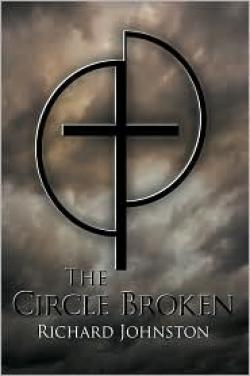The Circle Broken
Canada’s history, especially stories about the early French voyageurs who trekked from the St. Lawrence River into the woods of La Nouvelle France, possesses enough adventure to thrill history buffs*.*
Johnston’s hero is Remy Moisson, son of a French peasant. It is 1679, and Remy has signed on to participate in one of La Salle’s explorations. Remy’s mother died when he was young, leaving him an angry, confused, and undisciplined child. His father sent him to be educated by the Jesuits. Now venturing into the raw New World, Remy is one of the few able to read and write; he also converses with the priests about religion. Through those exchanges, readers learn about the conflict between the Europeans and Amerindians.
North of the Montreal and Quebec settlements, the La Salle party is constructing a large boat with the intention of crossing the Great Lakes, traveling down the Illinois River to the Mississippi, reaching the sea, and claiming the vast territory for Louis XIV. But some whites feel neither the missionary priests, nor the fur traders, nor explorers like La Salle have the interests of the native peoples in mind. This is a truth Remy learns when he is dispatched to find Pierre Chandavoine, a skilled woodsman. La Salle wants Chandavoine’s help; Pierre is reluctant, preferring to live off the land’s bounty and deal peacefully with the Iroquois and the Huron.
During his search for Chandavoine, Remy stumbles upon Tikanaka, a Huron of the Wendat clan, alone in the forest. As he attempts to spy upon her, she laughingly pushes him into a river. This encounter moves Remy’s life in a direction he never anticipated. Later, when La Salle’s foray is delayed, Remy seeks out Tikanaka’s village. There, Remy learns about the Huron’s belief in the circle of life, and he becomes Tikanaka’s lover.
Johnston uses flashbacks to good effect, and he brings in wonderfully sketched characters—Chandavoine, “the wise and stalwart Brassart,” and Henri de Tonty, a La Salle lieutenant who is “fair and slow to anger.” Johnston also uses letters between missionary priests to deepen the story. Through Jesuit Father Laurent, we see the bright and inquisitive Tikanaka begin to learn French and to read and write.
As his contract with La Salle ends, Remy discovers Tikanaka’s village has been destroyed by the Iroquois. Tikanaka is missing, and Remy begins a relentless search. La Salle returns to France and organizes a voyage to the mouth of the Mississippi to establish a settlement, an expedition that ultimately ends in his death at the hands of his own men.
Johnston is a retired university professor whose research into his subject lends an air of impressive authenticity. His writing is clear and smooth in this wonderfully imagined novel, and there is sufficient material to support a book twice the length of Circle, which may be why the conclusion leaves room for a sequel.
Reviewed by
Gary Presley
Disclosure: This article is not an endorsement, but a review. The publisher of this book provided free copies of the book and paid a small fee to have their book reviewed by a professional reviewer. Foreword Reviews and Clarion Reviews make no guarantee that the publisher will receive a positive review. Foreword Magazine, Inc. is disclosing this in accordance with the Federal Trade Commission’s 16 CFR, Part 255.

